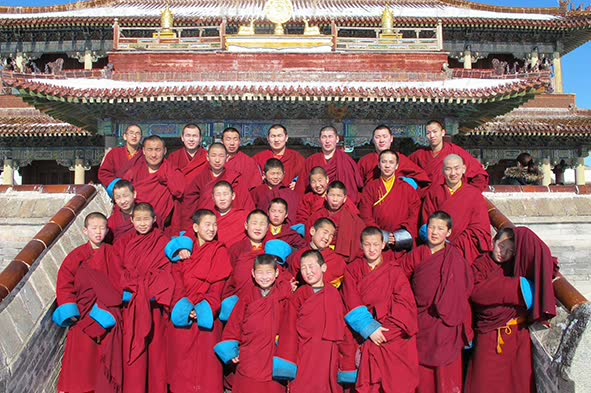Amarbayasgalant Monastery
ABOUT AMARBAYSGALANT MONASTERY
Amarbayasgalant Monastery, also known as the "Monastery of Tranquil Felicity," is a prominent Buddhist monastery located in the Selenge Province of northern Mongolia. Here's some information about Amarbayasgalant Monastery:

Visiting Amarbayasgalant Monastery allows you to witness the architectural splendor, delve into the spiritual legacy, and appreciate the cultural significance of this renowned Buddhist monastery. It is a place where history, art, and devotion come together, offering a glimpse into Mongolia's rich cultural heritage and the enduring traditions of Tibetan Buddhism.
GOOD TO KNOW

- History and Architecture: Amarbayasgalant Monastery was built between 1727 and 1736 by order of the Manchu Emperor Yongzheng, in honor of Zanabazar, the first Jebtsundamba Khutuktu and the spiritual head of Tibetan Buddhism in Mongolia. The monastery exhibits a unique blend of Mongolian, Tibetan, and Chinese architectural styles. The complex features numerous temples, prayer halls, stupas, and other buildings that showcase intricate woodwork, colorful paintings, and ornate sculptures.
- Spiritual Significance: Amarbayasgalant Monastery is considered one of the most important religious and cultural sites in Mongolia. It served as a major center for Buddhist learning and practice, attracting monks from various parts of Mongolia. The monastery played a crucial role in preserving Buddhist scriptures, teachings, and traditions during periods of political and social change.
- Cultural Heritage: The monastery is an important symbol of Mongolian cultural heritage. It reflects the artistic, architectural, and spiritual achievements of the Mongolian people. Amarbayasgalant Monastery has survived the political turmoil and religious persecution of the 20th century and continues to serve as a place of worship, cultural preservation, and pilgrimage.
- Architectural Highlights: The main temple of Amarbayasgalant Monastery, the Zuu Temple, is an impressive structure with four levels and a golden rooftop. The temple houses a large statue of Buddha and is adorned with intricate carvings and murals depicting Buddhist deities and scenes from Tibetan Buddhist cosmology. The surrounding temples and buildings, including the magnificent library and assembly hall, contribute to the architectural grandeur of the monastery.
- Surrounding Landscape: Amarbayasgalant Monastery is situated in a picturesque valley surrounded by rolling hills and scenic landscapes. The natural setting adds to the peaceful and serene atmosphere of the monastery. Visitors can enjoy the tranquility of the surroundings, take in the views of the surrounding mountains, and explore the nearby rivers and forests.
- Cultural Festivals: Amarbayasgalant Monastery hosts various religious and cultural festivals throughout the year, attracting both locals and tourists. During these festivals, monks perform sacred rituals, cham dances, and other religious ceremonies. The festivals provide an opportunity to experience the vibrant traditions and spiritual practices of Mongolian Buddhism.
RELATED TOURS
The Uushig Deer Stone Monument is an ancient archaeological site located in the Khovd Province of western Mongolia. Here's some information about the Uushig Deer Stone Monument:
Mongolian Shamanism, also known as Tengerism or Burkhanism, is an ancient indigenous religious and spiritual belief system practiced by the Mongols and some other ethnic groups in Mongolia and the surrounding regions.
The Darkhad Valley is a remote and picturesque region located in northern Mongolia. It is home to the Darkhad ethnic group, who are traditional reindeer herders. Here's some information about the Darkhad Valley and its reindeer herders:


